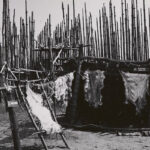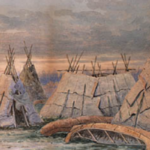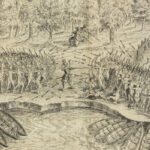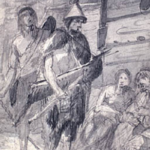Elsipogtog First Nation: A Legacy of Resilience and Connection to the Land
The Elsipogtog First Nation, located along the banks of the Richibucto River in New Brunswick, stands as a vibrant community deeply rooted in the traditions and history of the Mi’kmaq Nation. Known for their profound connection to the land, rivers, and sea, the people of Elsipogtog (meaning “River of Fire” in Mi’kmawi’simk) have long embodied the resilience and adaptability of the Mi’kmaq. Their story spans millennia, encompassing their pre-contact origins, encounters with European settlers, and the transformations brought by colonization and modernity.
Pre-History: Mi’kmaq Origins and Connection to the Land
The Mi’kmaq, one of the earliest Indigenous peoples in northeastern North America, trace their ancestry back over 10,000 years. Archaeological evidence, including tools, pottery, and fishing weirs found throughout Mi’kma’ki (the traditional Mi’kmaq territory), attests to their deep connection to the lands and waters of what is now Atlantic Canada. The region’s rivers, forests, and coasts provided everything they needed to thrive.
The Mi’kmaq of Elsipogtog were semi-nomadic, moving with the seasons to ensure sustainable use of resources. Summers were spent along the coasts and rivers, where fishing for salmon, eel, and cod provided a staple diet. Winters brought smaller groups inland to hunt moose, caribou, and smaller game. Their environment shaped their worldview, fostering a spiritual belief system that emphasized respect for the land and the interconnectedness of all living beings.
The Mi’kmaq concept of Netukulimk, which embodies the principle of taking only what is needed and ensuring the land’s ability to provide for future generations, guided their relationship with nature. This philosophy remains central to Mi’kmaq identity and has been passed down through oral traditions.
Governance and Social Structure
The governance of the Mi’kmaq, including those of the Elsipogtog First Nation, was rooted in respect, consensus, and shared responsibility. Communities were organized into districts, each led by a Sagamore (district chief). These districts formed a larger network united under the Grand Council (Santé Mawiómi), a governing body responsible for maintaining peace, managing resources, and addressing conflicts.
Decisions were made collectively, with elders providing wisdom and guidance. Chiefs were chosen based on their ability to lead and mediate, reflecting the Mi’kmaq’s emphasis on collaboration and harmony.
First Contact with Europeans
The arrival of European explorers and settlers in the 16th century marked a significant turning point for the Mi’kmaq of Elsipogtog. Early encounters were primarily with French fishermen and traders who came to the Gulf of St. Lawrence for the rich cod fisheries. These interactions were initially transactional, with the Mi’kmaq trading furs for European goods such as metal tools, cloth, and beads.
The establishment of French settlements in the region during the 17th century deepened these relationships. French explorers, including Samuel de Champlain, forged alliances with the Mi’kmaq, recognizing their expertise in navigating and surviving the land. The Mi’kmaq, in turn, found value in the tools and technologies brought by the French, which complemented their traditional practices.
The fur trade became a cornerstone of these relationships, with the Mi’kmaq acting as trappers and intermediaries. While the trade brought new opportunities, it also introduced challenges. Overhunting of fur-bearing animals disrupted local ecosystems, and the arrival of Europeans brought diseases such as smallpox and measles, which devastated Indigenous populations.
Relationships with Missionaries and Settlers
French missionaries, particularly Jesuits, established missions among the Mi’kmaq, seeking to convert them to Christianity. The Mi’kmaq of Elsipogtog were drawn into this process, with many adopting elements of Christianity while integrating them into their existing spiritual beliefs. The Jesuits introduced written forms of Mi’kmawi’simk, creating documents and prayer books that remain significant in the preservation of Mi’kmaq culture.
The Mi’kmaq allied with the French during conflicts with the British, including the Seven Years’ War (1756–1763). These alliances were rooted in shared economic and cultural ties. However, the British victory brought significant changes to Mi’kmaq territory, including increased encroachment on their lands and disruptions to their way of life.
British Expansion and Adaptation
The British conquest of New France in 1763 brought new challenges to the Mi’kmaq. British policies often ignored Mi’kmaq sovereignty, leading to the loss of traditional lands and the imposition of colonial governance. The Proclamation of 1763, which aimed to protect Indigenous territories, was inconsistently enforced, and settler expansion continued unabated.
Despite these pressures, the Mi’kmaq of Elsipogtog adapted. They continued to rely on the Richibucto River for fishing, hunting, and transportation while engaging in new economic activities such as farming and logging. Their resilience allowed them to maintain many of their cultural practices and traditions, even as the colonial economy reshaped the region.
The 19th and 20th Centuries: Resilience and Revitalization
The establishment of reserves under the Indian Act (1876) confined the Mi’kmaq of Elsipogtog to smaller portions of their ancestral lands. This system, designed to assimilate Indigenous peoples, disrupted traditional governance and restricted their ability to move freely across their territory.
Despite these challenges, the people of Elsipogtog demonstrated remarkable resilience. Seasonal activities such as fishing and hunting continued, allowing families to stay connected to the land. Oral traditions, drumming, and storytelling preserved Mi’kmaq history and identity, ensuring that cultural knowledge was passed down to future generations.
Cultural Revitalization and Language Preservation
The Elsipogtog First Nation has been at the forefront of efforts to preserve and revitalize Mi’kmaq culture and language. Mi’kmawi’simk, the Mi’kmaq language, remains a cornerstone of community life, with educational programs and immersion initiatives ensuring its survival. The Elsipogtog Powwow, an annual celebration, brings the community together to honour their traditions through drumming, dancing, and storytelling.
Traditional crafts such as beadwork, quillwork, and basket-making are celebrated as symbols of Elsipogtog’s cultural heritage. These practices are not only artistic expressions but also living traditions that connect the community to their ancestors.
Environmental Stewardship and Advocacy
The people of Elsipogtog have long been stewards of the Richibucto River and its surrounding ecosystems. Their traditional ecological knowledge informs their approach to resource management, ensuring that fishing, hunting, and forestry practices remain sustainable.
Modern challenges such as overfishing, habitat destruction, and climate change have heightened the need for advocacy. The Elsipogtog First Nation has taken an active role in protecting their lands and waters, partnering with environmental organizations and governments to address these issues. Their efforts reflect a commitment to preserving Mi’kma’ki for future generations.
Elsipogtog Today: A Thriving Community
Today, the Elsipogtog First Nation is a vibrant and dynamic community of approximately 3,000 members. Investments in education, healthcare, and economic development reflect their commitment to building a sustainable future while honouring their traditions. Cultural tourism, including guided tours and participation in traditional activities, has become an important part of the local economy, showcasing the community’s rich heritage.
The Elsipogtog First Nation also plays a leadership role in regional governance, advocating for Mi’kmaq rights and cultural preservation. Their efforts highlight the enduring strength of the Mi’kmaq people and their ability to thrive in the face of change.
Conclusion: A Legacy of Strength and Continuity
The history of the Elsipogtog First Nation is a testament to their resilience, adaptability, and deep connection to the land and waters of the Richibucto River. From their ancient presence along the shores of Mi’kma’ki to their central role in early European trade and their modern efforts in cultural revitalization and environmental advocacy, the Mi’kmaq of Elsipogtog have maintained their identity and place within Canada’s evolving landscape.
As an elder from Elsipogtog once said, “The land and river are our lifeblood, connecting us to our past and guiding us into the future. By honouring our traditions and protecting our heritage, we ensure that our story continues.”
References
- Brightman, Robert. Grateful Prey: Rock Cree Human-Animal Relationships. University of California Press, 1993.
- Whitehead, Ruth Holmes. The Old Man Told Us: Excerpts from Micmac History, 1500–1950. Nimbus Publishing, 1991.
- Jesuit Relations. Documents of the Missions to New France. McGill University Press, 1962.
- Conrad, Margaret. A Concise History of Canada. Cambridge University Press, 2012.
- Elsipogtog Cultural Centre. Guardians of the River: The History and Culture of Elsipogtog. Elsipogtog Publications, 2015.
- Environmental Justice Advocacy Group. Stewardship and Sovereignty: The Role of the Mi’kmaq in Environmental Advocacy. University of Guelph Press, 2019.
- Mi’kmaq Grand Council. Santé Mawiómi: Traditions and Governance of the Mi’kmaq Nation. Halifax Press, 1985.
- Ridington, Robin. Trail to Heaven: Knowledge and Narrative in a Northern Native Community. Douglas & McIntyre, 1988.
- Johnston, Basil. Ojibway Heritage. McClelland & Stewart, 1976.
- Snow, Dean R. The Iroquois. Blackwell, 1994.



